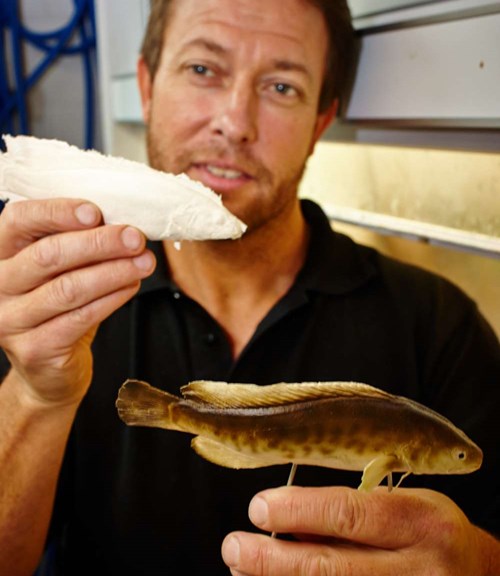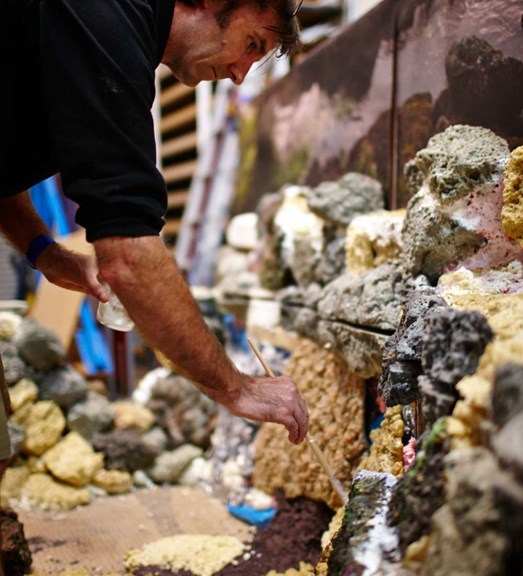Kooyang diorama in First Peoples
The Kooyang ('eels' in the Gunditjmara family of languages) section of the First Peoples exhibition in Bunjilaka Aboriginal Cultural Centre at Melbourne Museum features an eel trap in a diorama of Western District eel-farming practice. The trap, woven from puung'ort (spear grass) by Gunditjmara woman Jody-Ann Agnew, tells the story of one of the world’s oldest aquaculture systems.
Museum designers, curators, photographers and preparators have worked closely with Gunditj Mirring Traditional Owners Corporation to capture a slice of the Western District, complete with animals, plants and terrain typical of this area. The models and specimens of eels and other wildlife created by Dean Smith and Kym Haines are dazzlingly true-to-life, including a leech that Kym modelled from the little sucker that hunted him down when Jody's mother, senior weaver Aunty Eileen Alberts, took museum staff on a field trip to Tyrendarra, north-east of Portland.
Steven Sparrey and Brendon Taylor recreated the volcanic boulders of the Tyrendarra lava flow thrown out by Budj Bim (Mt Eccles) thousands of years ago. Gunditjmara people used these rocks to create an ingenious network of ponds, channels and dams to farm the eels. Aunty Eileen and Jody oversaw the final stages of the diorama construction.
See the kooyang diorama in the First Peoples exhibition in Bunjilaka Aboriginal Cultural Centre at Melbourne Museum.









